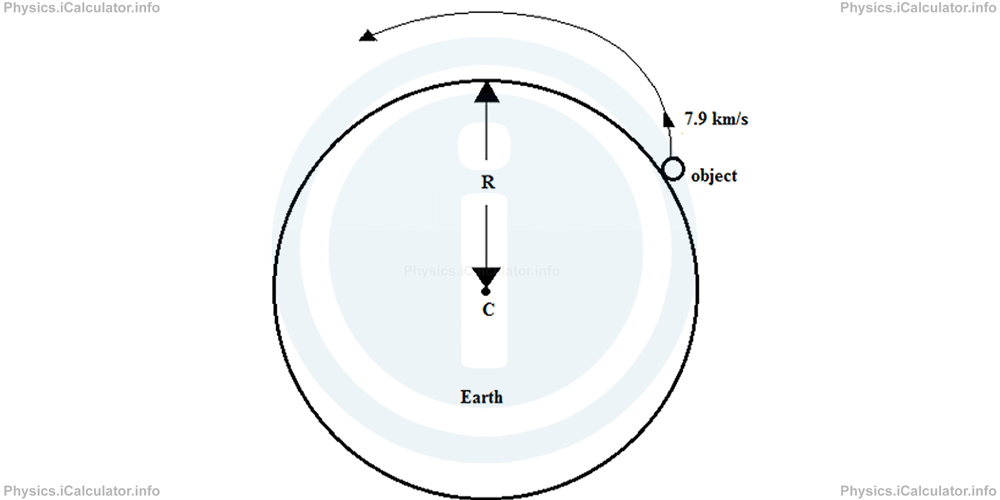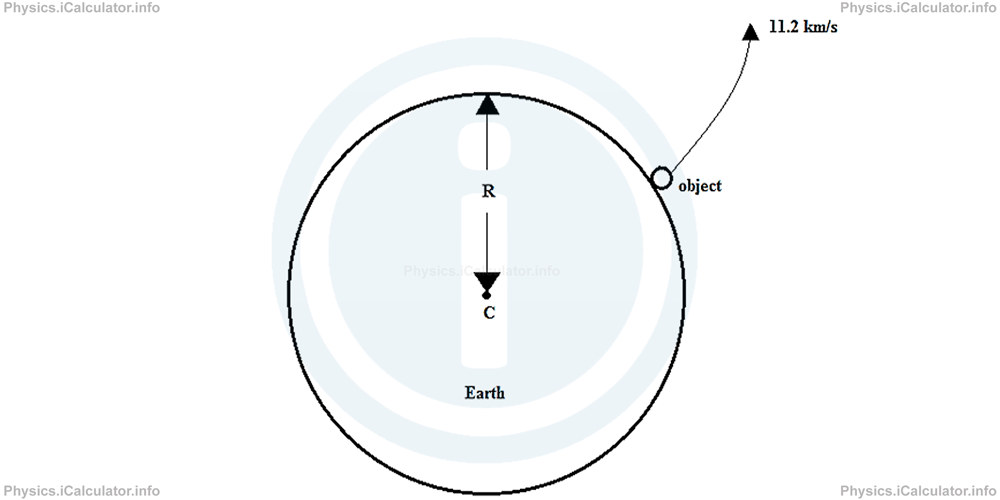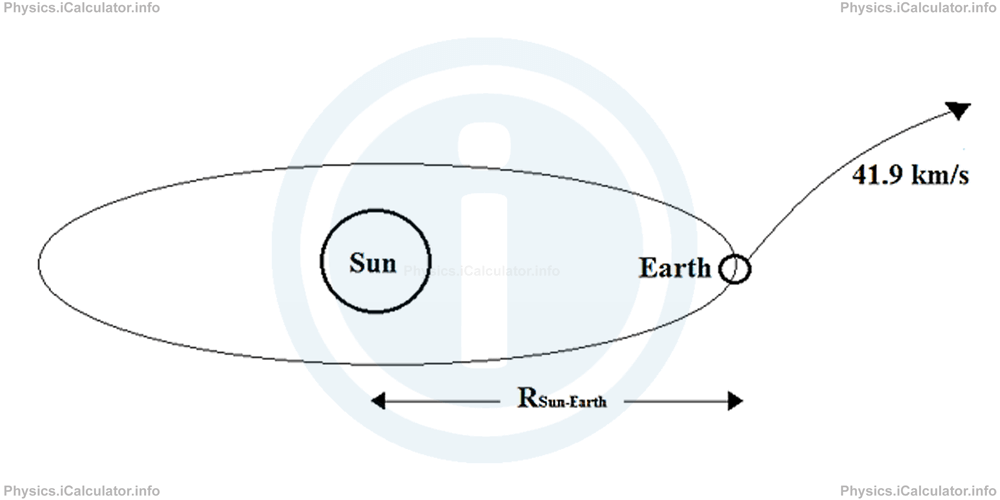Menu
Physics Lesson 8.2.2 - Cosmic Velocities
Please provide a rating, it takes seconds and helps us to keep this resource free for all to use
Welcome to our Physics lesson on Cosmic Velocities, this is the second lesson of our suite of physics lessons covering the topic of Gravitational Potential Energy. Kepler Laws, you can find links to the other lessons within this tutorial and access additional physics learning resources below this lesson.
Cosmic Velocities
When you throw an object upwards, it eventually falls on the ground after a while, due to the attraction effect of Earth's gravity. But is it possible to throw an object upwards with such a velocity as to overcome the gravity?
The answer is: Yes! The condition for this, is that the force used to move the object must be enough to overcome the gravitational force and thus, turn it into centripetal (or centrifugal if you wish) force, which enables the object rotate around the Earth without falling on it. No matter whether the object rotates or not; such an action is provided by the Earth during its daily rotation around itself.
Thus, we have:
G × M × m/R2 = m × v2/R
where M is the mass of Earth, m is the mass of the object candidate to become a satellite and R, the radius of Earth. Therefore, we obtain after simplifications,
v = √G × M/R
As you see, all the above values are constants. This means the throwing velocity required to turn an object into a satellite is independent from the object features. Thus, substituting the known values, we obtain
= √6.256 × 107
= 7.9 × 103 m/s
= 7.9 km/s
The above value is known as the first cosmic velocity or orbital velocity, i.e. the least launching velocity required to make an object rotate around the Earth without falling on it. Look at the figure.

If we are not interested to keep an object rotating around the Earth as a satellite but to send it away in space, the minimum launching velocity for this action is known as escape velocity from Earth. It is also known as the second cosmic velocity. Let's see how we can find its value.
If we want to make the object get unaffected from the Earth's gravity in any way, we must send it away so that the initial gravitational potential energy of object is entirely cancelled by the initial kinetic energy. Thus, from the law of mechanical energy conservation (read the tutorial on "Gravitational Potential Energy. The Law of Mechanical Energy Conservation"), we have:
If we obtain only the magnitudes (without the sign minus before GPE), we obtain:
where M is the mass of Earth, m is the mass of the object to be sent in space and R, the radius of Earth. Therefore, we obtain after simplifications,
v2 = 2 × G × M/R
v = √2 × G × M/R
Substituting the known values, we obtain for the escape velocity (the second cosmic velocity):
= √2 × 6.674 × 10-11 × 5.972 × 1024/6.371 × 106
= √1.2512 × 108
= 11185 m/s
≈11.2 km/s

Now, let's consider the hypothetical scenario in which we want to launch an object from Earth with such a velocity that it leaves the Solar System and moves freely in deep space. This is known as the third cosmic velocity, or the escape velocity from the solar system. The reasoning is similar as in the previous case except that we must use the mass of Sun instead of that of Earth and the distance Sun-Earth instead of radius of Earth when making the calculations. Thus, we have:
G × MSun × m/R = m × v2/2
Substituting the known values, (MSun = 1.989 × 1030 kg and RSun-Earth = 151.2 million km = 151.2 × 106 km = 1.512 × 108 km = 1.512 × 1011 m) and simplifying, we obtain for the minimum escape velocity from our solar system:
= √2 × 6.674 × 10-11 × 1.989 × 1030/1.512 × 1011
= √17.559 × 108
= 4.19 × 104 m/s
≈ 41.9 km/s

You have reached the end of Physics lesson 8.2.2 Cosmic Velocities. There are 4 lessons in this physics tutorial covering Gravitational Potential Energy. Kepler Laws, you can access all the lessons from this tutorial below.
More Gravitational Potential Energy. Kepler Laws Lessons and Learning Resources
Whats next?
Enjoy the "Cosmic Velocities" physics lesson? People who liked the "Gravitational Potential Energy. Kepler Laws lesson found the following resources useful:
- Cosmic Velocity Feedback. Helps other - Leave a rating for this cosmic velocity (see below)
- Gravitation Physics tutorial: Gravitational Potential Energy. Kepler Laws. Read the Gravitational Potential Energy. Kepler Laws physics tutorial and build your physics knowledge of Gravitation
- Gravitation Revision Notes: Gravitational Potential Energy. Kepler Laws. Print the notes so you can revise the key points covered in the physics tutorial for Gravitational Potential Energy. Kepler Laws
- Gravitation Practice Questions: Gravitational Potential Energy. Kepler Laws. Test and improve your knowledge of Gravitational Potential Energy. Kepler Laws with example questins and answers
- Check your calculations for Gravitation questions with our excellent Gravitation calculators which contain full equations and calculations clearly displayed line by line. See the Gravitation Calculators by iCalculator™ below.
- Continuing learning gravitation - read our next physics tutorial: Newton's Law of Gravitation
Help others Learning Physics just like you
Please provide a rating, it takes seconds and helps us to keep this resource free for all to use
We hope you found this Physics lesson "Gravitational Potential Energy. Kepler Laws" useful. If you did it would be great if you could spare the time to rate this physics lesson (simply click on the number of stars that match your assessment of this physics learning aide) and/or share on social media, this helps us identify popular tutorials and calculators and expand our free learning resources to support our users around the world have free access to expand their knowledge of physics and other disciplines.